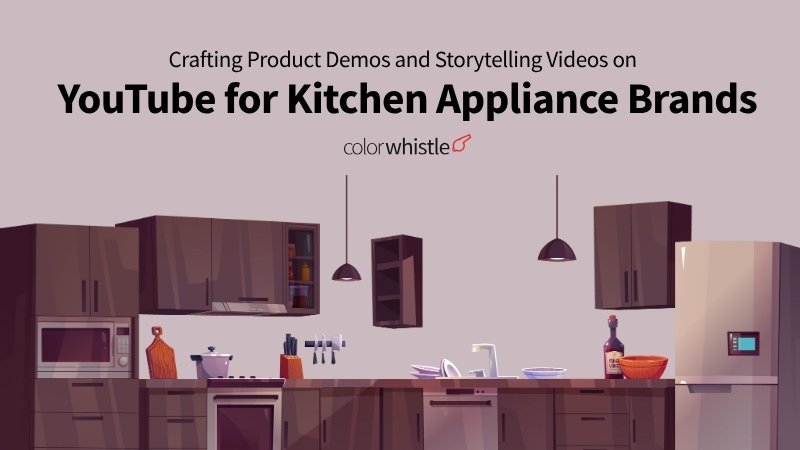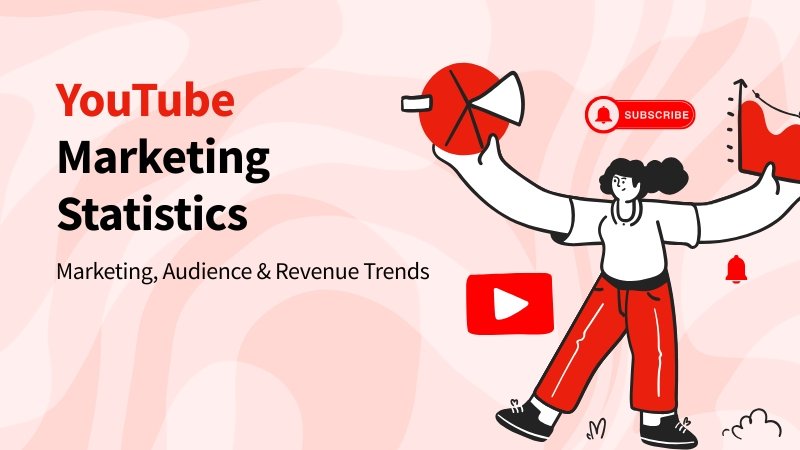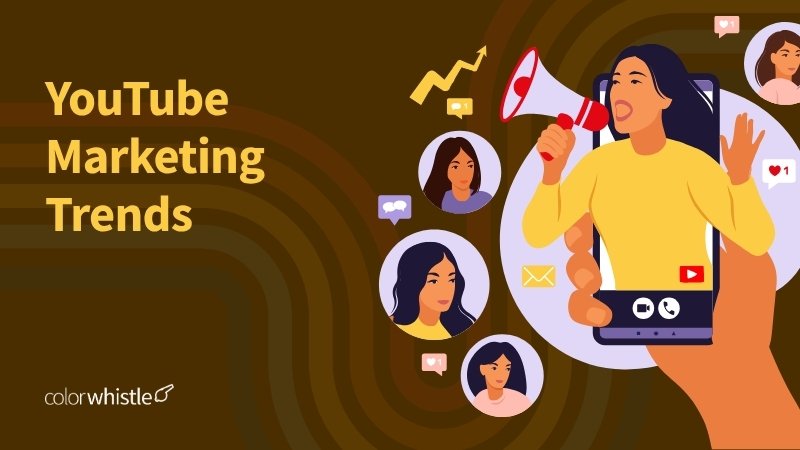YouTube is a powerful platform for kitchen appliance brands to showcase their products and connect with consumers. With its large audience and focus on visuals, YouTube provides a unique opportunity to engage viewers through product demonstrations and storytelling videos.
In this article, we will discuss strategies for creating effective product demos and captivating storytelling videos specifically designed for YouTube. These techniques aim to not only grab the attention of viewers but also influence their purchasing decisions. Additionally, we will explore the importance of YouTube SEO in increasing the visibility of these videos, ensuring they reach a larger audience and receive more engagement.
The Visual Advantage in Kitchen Appliance Marketing
High-quality visuals are essential for effective appliance video marketing. Today’s consumers expect more than just static product images; they want to see kitchen appliances being used, understand their unique features, and imagine these tools fitting into their daily lives. Visual storytelling helps bridge this gap by turning technical specifications into engaging and relatable content.
Showcasing Features and Benefits with Impact
Videos allow viewers to witness kitchen appliance features in real-time, from the smooth pour of a high-speed blender to the even browning achieved by a smart toaster oven. This dynamic presentation answers questions before they’re asked and reduces purchase hesitation.
Crystal-Clear Demonstrations
Videos allow viewers to witness kitchen appliance features in real-time, from the smooth pour of a high-speed blender to the even browning achieved by a smart toaster oven. This dynamic presentation answers questions before they’re asked and reduces purchase hesitation.
Highlighting Distinctive Benefits
Show, don’t just tell. Use close-up shots, slow-motion sequences, or split screens to highlight benefits such as energy efficiency, intuitive controls, or noise reduction.
“A 30-second clip showing how a stand mixer handles both delicate meringue and dense bread dough can communicate versatility better than any product description.”
Building Brand Identity Through Consistent Visual Style
Maintaining a consistent look across all video assets is crucial for brand messaging. Cohesive visual elements, such as color schemes, logo placement, and background settings, reinforce brand recognition and trust.
Signature Color Palettes
Select colors that reflect your brand ethos. For example, minimalist brands may opt for neutral tones and clean backdrops, while family-focused brands could incorporate warm hues and lively kitchen scenes.
Unified Editing Style
Implement similar transitions, fonts for on-screen text, and music choices throughout your content library.
Product Placement
Position appliances in aspirational yet realistic kitchen environments. A coffee maker on a clutter-free counter with fresh pastries nearby not only showcases the product but also sells a lifestyle.
Explaining Complex Functions with Engaging Visuals
Many modern appliances come packed with technology touchscreens, programmable settings, multifunctional attachments which can overwhelm potential buyers if presented through text alone. Video marketing excels at simplifying these points:
Animated Overlays
Use on-screen graphics to call out specific buttons or display cycle progress during demonstrations.
Step-by-Step Cutaways
Break down complicated processes (like setting up WiFi connectivity or switching attachments) with easy-to-follow chapters or time stamps.
Comparative Demos
Contrast old vs. new models visually to help customers appreciate upgrades and innovations.
Elevating Brand Messaging Through Visual Storytelling
Effective appliance video marketing doesn’t stop at feature exposition it weaves your brand’s promise into every frame. Whether through cinematic lighting that highlights product craftsmanship or everyday scenarios that spotlight convenience, each visual element should reinforce why your brand is the right choice for today’s kitchens.
Consistent storytelling powered by strong visuals ensures that product advantages aren’t just seen they’re remembered. This clarity sets the stage for engaging demos and user-centric narratives that keep potential customers watching and buying.
To maximize the impact of your video marketing strategy, consider implementing some video marketing tips tailored for small businesses. These strategies could redefine success for your small business in 2025 and beyond.
How-to and Unboxing Demos That Convert
How-to videos and unboxing demos have become essential in driving conversions for kitchen appliance brands on YouTube. These formats deliver both practical education and emotional excitement, guiding potential buyers from curiosity to confident purchase.
Crafting Step-by-Step How-to Videos
Clear, step-by-step demonstrations allow viewers to see kitchen tech in action, removing uncertainty about usage and benefits. To maximize impact:
- Structure tutorials logically: Begin with a quick intro highlighting what viewers will learn, then move through each feature or function methodically.
- Use clear visuals and close-ups: Show hands-on operation, knobs turning, blades spinning, pre-set controls, so users can visualize performing the steps themselves.
- Narrate with intent: Use simple language and explain why certain settings or accessories matter for specific recipes or outcomes.
- Add on-screen tips: Overlay graphics, text callouts, or ingredient lists to reinforce learning without interrupting the flow.
Example
A how-to video for a multi-function air fryer could start by showing its unboxing, then walk through setting up, selecting presets for fries vs. chicken wings, and cleaning after use.
The Magnetic Pull of Unboxing Demos
Unboxing demos tap into anticipation, the moment of unveiling a new kitchen gadget is inherently shareable. These videos build trust by providing an “out-of-the-box” look at packaging quality, including accessories, and initial impressions.
Benefits of effective unboxing:
Transparency breeds trust: Viewers see exactly what arrives at their door.
Addresses buyer anxieties: Demonstrating product scale, build quality, and easy setup removes hesitation.
Authenticity drives connection: Genuine reactions surprise at unexpected features, appreciation for thoughtful packaging foster brand credibility.
Example:
A coffee maker unboxing that highlights eco-friendly packaging, includes a first brew test, and compares the product’s look to online photos assures buyers they’ll get what’s promised.
Conversion Optimization Techniques for Kitchen Tech Demos
Maximizing engagement and conversion rates requires strategic planning:
- Front-load key information: Hook audiences in the first 10 seconds with a compelling statement or visual payoff.
- Maintain brisk pacing: Edit out dead air; keep visuals moving to maintain attention spans.
- Include clear calls-to-action (CTAs): End demos with direct prompts, “Check the link below to order,” or “See how this blender stacks up against others in our next video.”
- Leverage chapter markers: Allow viewers to jump straight to sections relevant to their needs setup, specific recipes, cleaning instructions.
- Optimize thumbnails and titles: Use crisp images of the appliance in action paired with benefit-driven titles such as “Easiest Way to Make Homemade Bread – [Brand] Breadmaker Demo.”
“How-to videos and unboxing demos aren’t just about showcasing features—they’re about reducing friction on the path to purchase by building understanding and excitement.”
By integrating these tactics into your content strategy, every demo becomes an opportunity not only to inform but also to inspire action.
Storytelling Through User Journeys and Recipes
Incorporating Authentic User Experiences
Storytelling videos that feature real-life user journeys can significantly enhance the appeal of kitchen appliances. By showcasing how actual customers use your products in their daily lives, you create relatable narratives that resonate with prospective buyers. Highlighting diverse user scenarios from busy parents preparing quick meals to culinary enthusiasts experimenting with gourmet recipes illustrates the versatility and practicality of your appliances.
Example
A video series featuring different families using a multi-functional blender for various purposes, like making smoothies, baby food, and sauces, offers a comprehensive view of the product’s capabilities.
Using Recipe-Driven Stories
Recipe videos are highly effective in demonstrating the practical application of kitchen appliances. By presenting step-by-step cooking guides that incorporate your products, you provide viewers with tangible examples of how these appliances can simplify and enhance their culinary experiences. This approach not only educates but also inspires viewers to envision themselves achieving similar results.
Key Points:
- Ingredient Showcases: Highlight unique ingredients that work well with your appliance.
- Step-by-Step Instructions: Ensure clarity and simplicity in each step to maintain viewer engagement.
- Finished Product Reveal: Display the final dish attractively to motivate viewers to try it themselves.
Example
A video demonstrating a stand mixer’s capabilities by creating various types of doughs for bread, pastries, and pizza can vividly illustrate its multifunctionality.
Building Emotional Connections
Effective storytelling goes beyond listing features; it taps into emotions by highlighting real-life benefits. Demonstrating how a kitchen appliance can improve the quality of life or solve everyday problems builds a deeper connection with your audience. Emotional connections drive brand loyalty and encourage word-of-mouth recommendations.
Strategies:
- Customer Testimonials: Share heartfelt stories from satisfied customers who have experienced significant improvements in their cooking routines.
- Lifestyle Integration: Show how your product fits seamlessly into different lifestyles, whether it’s for health-conscious individuals or tech-savvy home cooks.
- Behind-the-Scenes Content: Offer glimpses into the development process or company ethos to foster transparency and trust.
Example
A heartfelt testimonial from a customer who uses an air fryer to prepare healthier meals for their family can create a compelling narrative that appeals to health-conscious consumers.
By integrating user experiences, crafting recipe-driven stories, and building emotional connections, brands can create powerful storytelling videos on YouTube. These elements not only showcase the functionality of kitchen appliances but also foster a deeper relationship with viewers, driving both engagement and conversions.
Also Read
Influencer Collaborations and Real-Use Testing
Influencer marketing has become a crucial strategy for kitchen appliance brands looking to connect product features with practical use. By partnering with kitchen appliance influencers who have a wide reach and are trusted by their audience, brands can create genuine campaigns that stand out in a sea of advertising.
Selecting the Right Influencers
The success of an influencer campaign depends on how well it aligns with your target audience. Here are some factors to consider when selecting influencers for your kitchen appliance brand:
- Audience Demographics: Choose creators whose followers match your ideal customer profile in terms of age, location, interests, and buying habits.
- Content Style: Look for influencers whose video style whether it’s professional cooking tutorials or casual kitchen vlogs aligns with your brand’s tone and values.
- Credibility & Engagement: Focus on genuine engagement rates (comments, shares, saves) rather than just follower counts to ensure real influence.
- Niche Authority: Collaborate with culinary experts, home chefs, or lifestyle content creators who are already trusted voices in the food and home space.
A great example is teaming up with a popular meal-prep influencer who specializes in quick family dinners. Their audience is already interested in time-saving kitchen gadgets, making them a perfect fit for showcasing a versatile food processor.
Showcasing Genuine Product Usage
Authenticity builds trust. When influencers demonstrate how products seamlessly integrate into their daily lives, it speaks volumes about the product’s value. Instead of relying on scripted endorsements, opt for collaborations where creators:
- Unbox appliances in real-time and share their initial thoughts
- Incorporate the product naturally into their regular meal prep or recipe videos
- Highlight unique features through side-by-side comparisons with competing products
- Share both positive and negative aspects openly, reflecting their actual experiences
For instance, an influencer could create a series titled “A Week With My New Air Fryer,” showcasing not only the highlights but also any challenges they encounter or maintenance tips they discover. This level of honesty fosters credibility among viewers contemplating their own purchase decisions.
Collaborative Campaign Strategies
Collaborative campaigns with influencers provide an opportunity for brands to engage established communities while delivering valuable content. Here are some strategies you might consider implementing:
- Live Cooking Demos: Host live sessions on platforms like YouTube featuring influencers preparing signature dishes using your appliances viewers can actively participate through chat or polls.
- Honest Reviews & Tutorials: Encourage detailed walkthroughs of your products that address both strengths and areas for improvement.
- Exclusive Giveaways: Generate excitement by offering limited-edition products or discounts to followers who engage with or share their own recipes using your appliances.
- Multi-Platform Storytelling: Extend collaborations beyond YouTube by incorporating Instagram Reels, TikTok challenges, or Facebook groups for wider reach.
“When I partnered with [Brand] for their new blender launch,” shares Chef Anna on her channel, “I put it through my toughest smoothie recipes—and even tried some nut butters! Here’s what surprised me…”
Genuine feedback combined with interactive elements transforms passive viewers into active participants in your brand’s narrative. By blending real-use testing with relatable personalities, influencer marketing campaigns can deeply resonate with target audiences, driving both engagement and conversion across various channels.
Optimizing Video Content for Retail and D2C Campaigns
Retail marketing videos and direct-to-consumer campaigns require distinct yet complementary approaches to maximize reach and conversion. Customizing your YouTube content strategy for both retail partners and D2C channels means addressing the needs of each audience while maintaining a cohesive brand presence across platforms.
Tailoring Videos for Retail Partners
- Co-branded Content: Produce videos that highlight exclusive features, bundle offers, or in-store promotions specific to your retail partners. Branded overlays or end screens can drive store traffic.
- Point-of-Sale Displays: Short, eye-catching demo loops designed for in-store screens introduce products quickly and clearly where purchase decisions are made.
- Retail Staff Training: Develop private video playlists that educate retail staff on key product benefits, unique selling points, and troubleshooting, empowering them to become informed advocates.
Direct-to-Consumer (D2C) Video Strategies
- Personalized Product Journeys: Use storytelling that targets buyers’ lifestyles, focusing on how your appliance solves everyday problems or enhances home life.
- Shoppable Video Features: Integrate clickable links, cards, or QR codes within YouTube videos to streamline the path from interest to purchase on your own e-commerce site.
- Customer Testimonial Reels: Feature real users’ experiences and unboxings to build authenticity and trust directly with potential buyers.
Platform Selection: Beyond YouTube
Reaching shoppers where they spend their time is crucial for video optimization. While YouTube remains the foundation for long-form storytelling and deep-dive demos, supporting content on these platforms broadens engagement:
- Instagram Reels & Stories: Perfect for quick tips, recipe highlights, behind-the-scenes peeks, and influencer-driven snippets.
- Facebook Video: Effective for wider demographic targeting through shareable how-tos, live Q&As, and event coverage.
- TikTok: Use short-form viral challenges, creative recipes, or trending audio to engage younger audiences with fun product showcases.
Consistent messaging and visual identity across channels reinforce brand recognition while adapting the format ensures each video meets platform-specific expectations.
Retail marketing videos tailored for stores work best alongside D2C content designed for social engagement, together fueling both immediate sales lift and long-term loyalty.
Data to Track Engagement and Product Interest
Using video analytics tools is crucial for kitchen appliance brands looking to improve their YouTube strategy. When creating product demos and storytelling videos on YouTube, it’s important to understand how viewers interact with your content. This knowledge can provide valuable insights that lead to increased engagement and conversions.
YouTube Analytics Tools: Unlocking Audience Insights
- Audience Demographics: Dive into age, gender, geographic location, and device usage data. This helps tailor future content for example, if a significant portion of viewers are young urban professionals, consider recipe-driven demos that suit busy lifestyles.
- Viewer Behavior: Analyze metrics like average view duration and audience retention graphs. Identify drop-off points in videos to understand which segments lose attention and which keep viewers glued.
- Traffic Sources: Determine whether your audience finds your videos through YouTube Search, suggested videos, or external sources like Instagram or Facebook. This data helps allocate promotional resources more effectively.
Key Performance Indicators (KPIs) That Matter
Tracking the right KPIs ensures each video’s impact is measurable:
- Reach: The number of unique viewers exposed to your content. High reach shows effective distribution, but doesn’t always mean engagement.
- Watch Time: Total minutes watched gives a sense of overall interest and depth of engagement a higher watch time signals compelling content.
- Click-Through Rate (CTR): The percentage of viewers who click on links embedded in descriptions or end screens. An optimized thumbnail and title can boost CTR significantly.
- Engagement Metrics: Likes, comments, shares, and subscriptions are clear markers of audience involvement. These signals also influence YouTube’s algorithm for recommending videos.
- Conversions: Track clicks leading to website visits, product page views, or direct purchases using integrated UTM parameters or e-commerce tracking tools.
Brands that consistently monitor these indicators gain deeper visibility into what resonates with audiences—enabling smarter creative decisions and more targeted campaigns.
Analyzing this data regularly supports continuous improvement in both video structure and storytelling approaches, keeping content aligned with consumer preferences as you scale your YouTube presence.
In addition to leveraging video analytics, incorporating SEO strategies into your YouTube content can significantly enhance visibility and engagement. By optimizing video titles, descriptions, and tags with relevant keywords, kitchen appliance brands can improve their search rankings on YouTube and attract a larger audience.
Case Study Spotlight: Blendtec’s “Will It Blend?” Campaign
Blendtec changed the way products are demonstrated with their “Will It Blend?” campaign, turning ordinary demos into viral marketing hits. By blending unusual items like iPhones, golf balls, and even marbles, Blendtec grabbed the attention of millions and showcased the power and durability of their blenders in an entertaining way.
Transforming Demos into Viral Hits
Creativity
Blendtec’s approach was anything but ordinary. By selecting bizarre and unexpected items to blend, they sparked curiosity and intrigue among viewers.
Entertainment Value
The videos were not just informative; they were fun to watch. Each episode left viewers wondering what would be blended next, driving repeat engagement.
Consistency
Regular uploads maintained viewer interest and built anticipation for new content.
Lessons in Creativity and Authenticity
Unique Angle
Finding a unique angle that stands out from typical product demos can make a significant impact. Blendtec’s unusual choice of blending items was key to their success.
Authenticity
The genuine reactions of the host, along with the real-time blending results, added authenticity to the videos. This genuine presentation fostered trust among viewers.
Engagement
Encouraging audience participation through suggestions for future blends kept viewers invested and engaged with the brand.
Also Read
Impact on Brand Awareness and Sales
1. Increased Visibility
The “Will It Blend?” series generated millions of views, significantly boosting brand visibility.
2. Brand Recall
The memorable and distinctive nature of the videos helped Blendtec become synonymous with powerful blenders.
3. Sales Growth
The heightened brand awareness translated into increased sales as consumers associated Blendtec blenders with exceptional performance.
By using creativity and authenticity in their demo presentations, Blendtec turned their marketing strategy into a viral success. This case shows how kitchen appliance brands can attract audiences while effectively showcasing product features on YouTube.
Conclusion
A well-crafted YouTube marketing strategy for kitchen appliance brands can turn casual viewers into loyal customers. By using tactics like high-quality visuals, engaging product demos, authentic storytelling, influencer collaborations, and data-driven optimization, brands can build strong customer relationships and achieve significant growth.
ColorWhistle’s tailored YouTube Marketing Services can help your brand reach new heights. With our expertise in digital marketing, we create video journeys that are as unique as your product. Our services go beyond video production to include comprehensive content marketing strategies, ensuring that every piece of content resonates with your audience while driving growth and delivering value with each view.
Ready to turn views into active users?
Contact us at +1 (919) 234-5140 or send us a message directly. We’ll assist you in creating intelligent content that drives growth and provides value with every play.
FAQs (Frequently Asked Questions)
Why is YouTube an effective platform for marketing kitchen appliance brands?
YouTube serves as a powerful platform for kitchen appliance brands to showcase their products through engaging video content, connect directly with consumers, and demonstrate appliance features and benefits visually, which enhances understanding and drives engagement.
How can high-quality visuals improve kitchen appliance marketing videos?
High-quality visuals play a crucial role by clearly showcasing product features, aligning with brand messaging, and communicating complex appliance functions attractively. Consistent visual styles help reinforce brand identity and make the videos more appealing to viewers.
What types of demo videos are most effective for converting viewers into customers?
Clear how-to videos and unboxing demos are highly effective as they educate viewers on product usage step-by-step, build excitement and trust through authentic presentation, and optimize viewer retention which leads to higher sales conversions.
How does storytelling enhance product demos for kitchen appliances on YouTube?
Storytelling through user journeys and recipe-driven videos creates relatable narratives that highlight real-life benefits of appliances. This approach builds emotional connections beyond just listing features, making the content more engaging and persuasive.
What role do influencer collaborations play in promoting kitchen appliances on YouTube?
Influencer collaborations allow brands to reach target demographics authentically by showcasing genuine product use. Strategies like live demos, reviews, and giveaways with influencers boost credibility and expand campaign impact effectively.
How can brands optimize their YouTube video content for both retail partners and direct-to-consumer campaigns?
Brands should tailor video content to support various sales channels by incorporating platform-specific strategies, including promotion on social media platforms like Instagram, Facebook, and TikTok, alongside YouTube. Utilizing video analytics tools to monitor engagement metrics ensures continuous optimization for better reach and conversions.
What’s Next?
Now that you’ve had the chance to explore our blog, it’s time to take the next step and see what opportunities await!





